Gold-Threaded Roman Crystal Jar Discovered in the Galloway Hoard Astonishes Experts
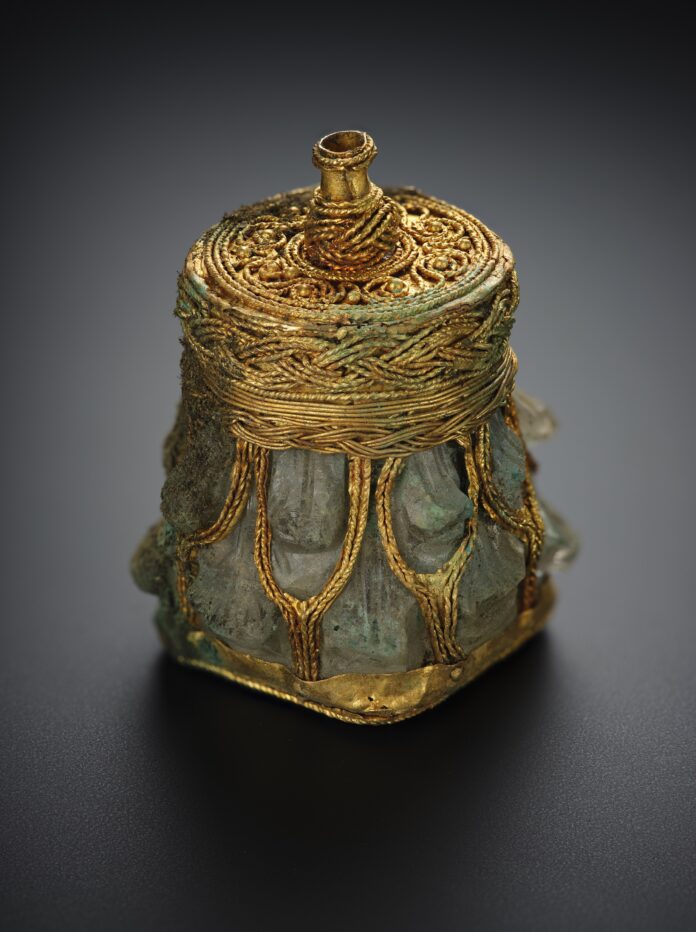 Stacked from 42 images. Method=B (R=8,S=4)
Stacked from 42 images. Method=B (R=8,S=4)
The discovery of the Galloway Hoard in 2014 marked a significant moment in the history of archaeology, revealing a treasure trove of Viking-era artifacts that continue to astonish scholars and enthusiasts alike. Among these remarkable objects is a carved rock crystal jar, recently cleaned and conserved by experts at the National Museums Scotland (NMS). This extraordinary artifact, once believed to be of Carolingian origin, has been identified as a Roman crystal jar from the late 8th or early 9th century, wrapped in intricate layers of gold thread. The ongoing conservation project is uncovering new insights into this jar’s origins, shedding light on its journey through history and its place within the richest Viking hoard ever found in Britain or Ireland.
The Discovery of the Galloway Hoard
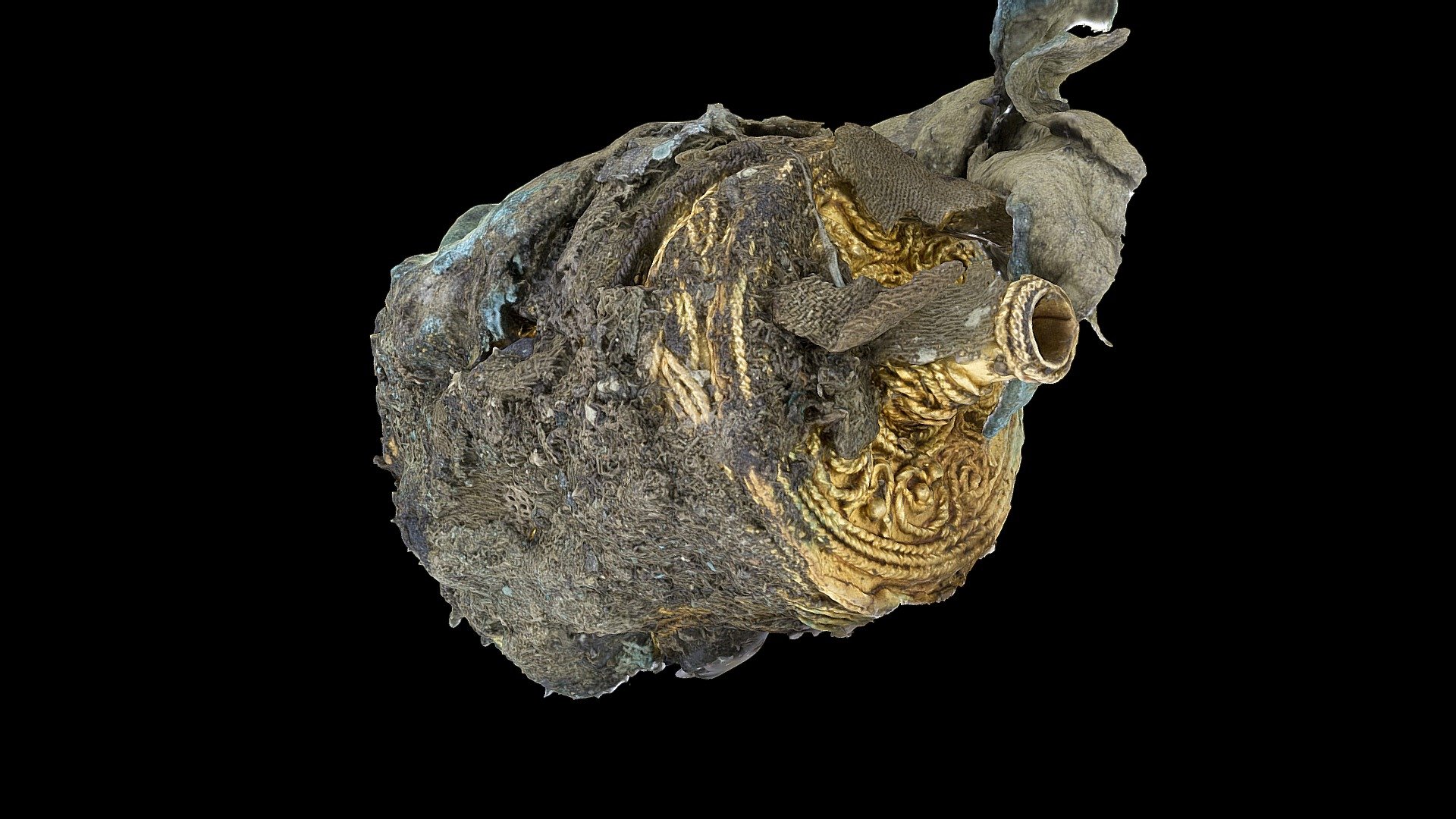
The Galloway Hoard was discovered in September 2014 by a metal detectorist in a field near Castle Douglas in Dumfries and Galloway, Scotland. This assemblage of high-status Viking objects is the richest of its kind ever found in Britain or Ireland. The hoard’s acquisition by the National Museums Scotland in 2017, for an ex gratia payment of £1.98 million ($2,550,000), set the stage for a complex and meticulous examination of the artifacts it contained.
A Treasure Trove of Rare Artifacts
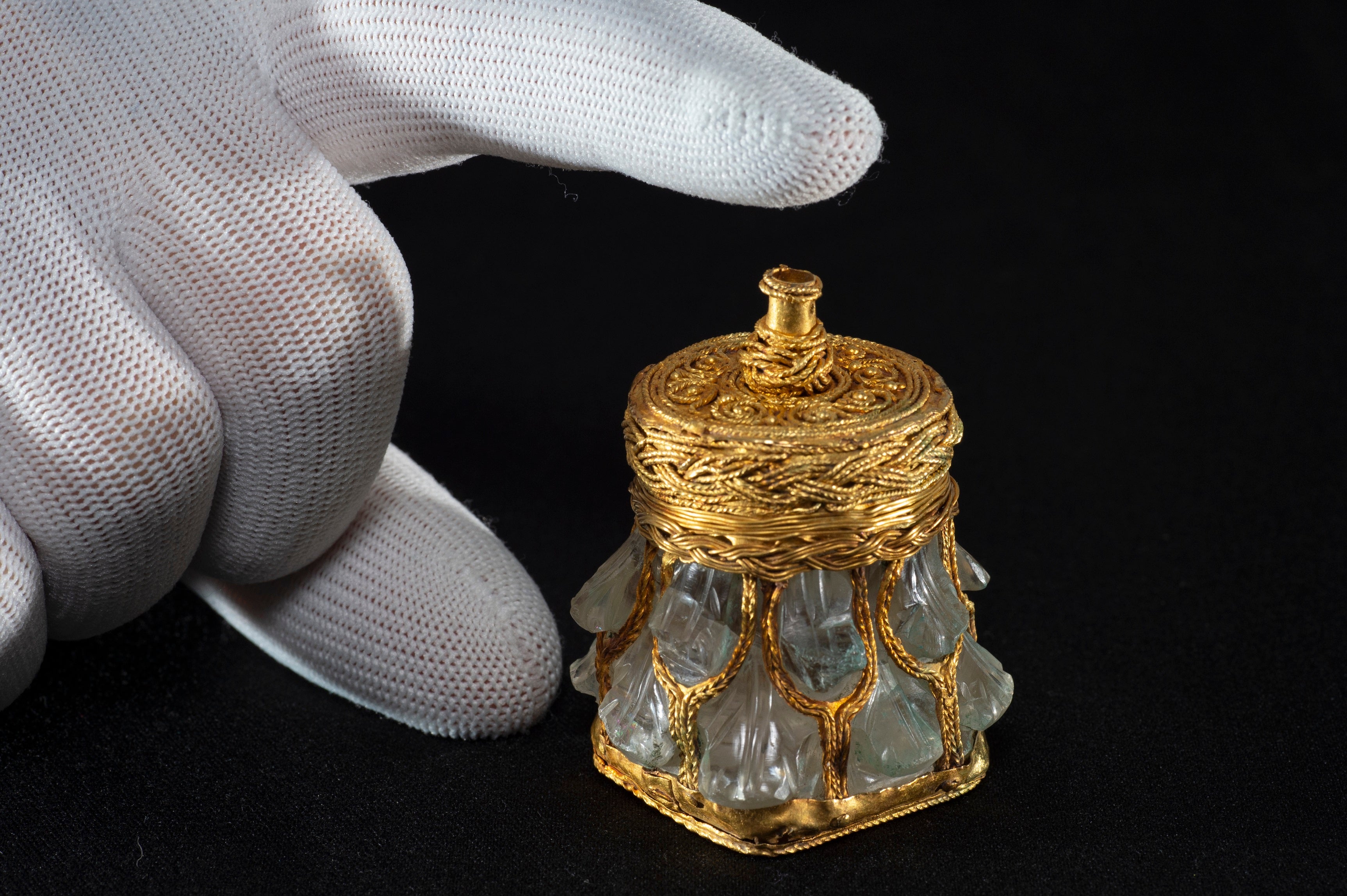
Over the years, the conservation and cleaning of the Galloway Hoard have revealed an astonishing array of rare objects. Among these are a silver pectoral cross with niello enamel decoration, a unique gold bird-shaped pin, and a silver-gilt pot that was once believed to have been produced in the Carolingian Empire. This pot, one of only three known from Britain, was discovered complete with its original lid and wrapped in woven textiles. To preserve the delicate textiles and carefully examine the contents, conservators utilized CT scanning technology, which revealed a treasure trove inside, including a 9th-century Anglo-Saxon brooch, an Irish penannular brooch, a gold reliquary pendant, and a hinged silver strap.
A Persian Connection

The conservation project has already produced extraordinary results, particularly regarding the silver-gilt pot. A 3D model created from X-ray imaging of the pot revealed that its iconography—featuring leopards, tigers, and Zoroastrian symbols—was not of Carolingian origin but rather Sasanian, indicating that the vessel came from Persia, not continental Europe. Radiocarbon dating of textile samples wrapped around the vessel found that it was produced between 680 and 780 A.D., making it 100-200 years old by the time it was buried in the hoard.
The Roman Crystal Jar
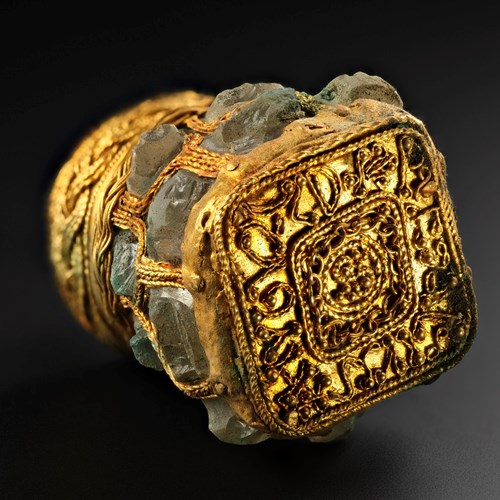
One of the most intriguing objects within the silver-gilt pot is the carved rock crystal jar. When first removed, the jar was encased in a silk-lined leather pouch. 3D X-ray imaging revealed a Latin inscription on the base of the jar, which read: “Bishop Hyguald had me made.” This inscription, along with the jar’s design, suggested that it began as the capital of a Corinthian column made of rock crystal during the late Roman Empire. Over the next 500 years, the crystal column capital was transformed into a jar and wrapped in gold thread, creating the extraordinary artifact that we see today.
A Glimpse into the Past
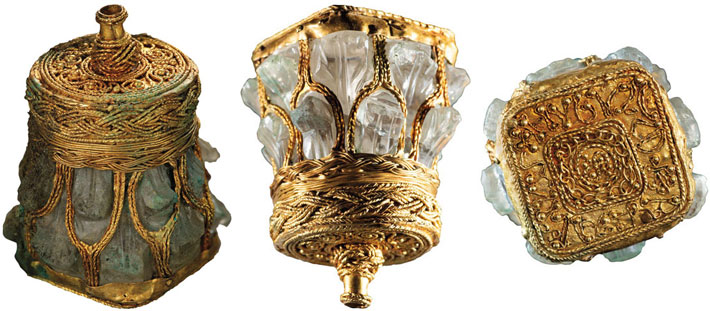
The rock crystal jar’s significance extends beyond its remarkable craftsmanship. There is a possibility that the jar still contains trace elements of the potion it once held, and modern science may be able to reveal the precise chemicals used. Dr. Martin Goldberg, NMS’s principal curator of early medieval and Viking collections, speculates that the jar may have once held a rare and exotic liquid, perhaps a perfume from the Orient or an anointing oil used in royal or ecclesiastical ceremonies. Such a discovery would offer a fascinating glimpse into the cultural and religious practices of the time.
Conclusion
The Galloway Hoard continues to captivate the world with its extraordinary array of artifacts, each offering a unique window into the past. The carved rock crystal jar, now revealed as a Roman crystal jar wrapped in gold thread, is a testament to the intricate craftsmanship and rich history of the Viking era. As the conservation project at the National Museums Scotland progresses, we can expect even more remarkable discoveries that will deepen our understanding of this incredible hoard and the people who created and cherished these treasures.
Video
News
The Hanging Temple: China’s 1,500-Year-Old Cliffside Marvel of Faith and Engineering
The Hanging Temple: China’s 1,500-Year-Old Cliffside Marvel of Faith and Engineering Perched precariously on the cliffs of Mount Heng in Shanxi Province, China, the Hanging Temple, also known as Xuankong Temple, Hengshan Hanging Temple, or Hanging Monastery, is an architectural…
The Willendorf Venus: A 30,000-Year-Old Masterpiece Reveals Astonishing Secrets
The Willendorf Venus: A 30,000-Year-Old Masterpiece Reveals Astonishing Secrets The “Willendorf Venus” stands as one of the most revered archaeological treasures from the Upper Paleolithic era. Discovered in 1908 by scientist Johann Veran near Willendorf, Austria, this small yet profound…
Unveiling the Maya: Hallucinogens and Rituals Beneath the Yucatán Ball Courts
Unveiling the Maya: Hallucinogens and Rituals Beneath the Yucatán Ball Courts New archaeological research has uncovered intriguing insights into the ritual practices of the ancient Maya civilization. The focus of this study is a ceremonial offering found beneath the sediment…
Uncovering the Oldest Agricultural Machine: The Threshing Sledge’s Neolithic Origins
Uncovering the Oldest Agricultural Machine: The Threshing Sledge’s Neolithic Origins The history of agricultural innovation is a fascinating journey that spans thousands of years, and one of the earliest known agricultural machines is the threshing sledge. Recently, a groundbreaking study…
Nara’s Ancient Sword: A 1,600-Year-Old Protector Against Evil Spirits
Nara’s Ancient Sword: A 1,600-Year-Old Protector Against Evil Spirits In a remarkable discovery that has captured the attention of archaeologists and historians alike, a 7.5-foot-long iron sword was unearthed from a 1,600-year-old burial mound in Nara, Japan. This oversized weapon,…
The Inflatable Plane, Dropped Behind the Lines for Downed Pilots
Experimental The Inflatable Plane, Dropped Behind the Lines for Downed Pilots The Inflatoplane from Goodyear was an unconventional aircraft developed by the Goodyear Aircraft Company, a branch of the renowned Goodyear Tire and Rubber Company, also famed for the Goodyear…
End of content
No more pages to load











